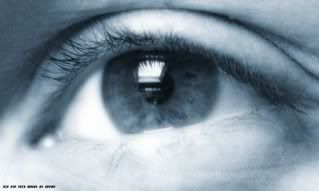profile
DOPT/FT/1B/04
Natalie Boey Mei Yern (0941716)
Lim Hui Lin (0941323)
Emily Tee Jia Qi (0941378)
Chua Mei Qi Maggie (0941451)
Joyce Oh Swee Ting (0941521)
 |
|
|
profile DOPT/FT/1B/04 Natalie Boey Mei Yern (0941716) Lim Hui Lin (0941323) Emily Tee Jia Qi (0941378) Chua Mei Qi Maggie (0941451) Joyce Oh Swee Ting (0941521) |
|
|
Wednesday, December 30, 2009 @ 8:33 AM
Pupillary Pathway 
Afferent Pupillary Light Pathway:
The afferent pupillary light pathway begins in the retinal receptor cells and passes through the optic nerve. Light that hits on the rods and cones are project to the bipolar neurons which project to the ganglion cells which enter the optic chiasm. Rods and cones are sensitive to wavelengths from 400-700 nm which is the wavelength of light. Pupillary fibers follow the optic tract (posterior third of the optic tract) and separate from the optic tract just anterior to the lateral geniculate body. Optic tract carries light impulses in between the lateral and medial geniculate bodies to the pretectal nucleus. They then enter the midbrain, where they synapse to pretectal nucleus. Thus, the optic tract carries pupillary fibers from both eyes, and the tectotegmental tract carries pupillary fibers from both pretectal nuclei. Pupillary fiber arrangements cause both pupils to constrict in the consensual light reflex. Efferent Pupillary Light Pathway: Parasympathetic Pupillary Pathway The efferent pupillary light pathway sets in motion at the Edinger-Westphal (E-W) nuclei. This is located on the dorsal aspect of the 3rd cranial nerve nucleus in the anterior dorsal mesencephalon at the level of the superior colliculus. Efferent pupillary fibers from the E-W nuclei are carried in the superficial layer of the 3rd cranial nerve to the cavernous sinus. Ultimately, the efferent pupillary fibers end in its inferior division, where they pass through the superior orbital fissure and synapse in the ciliary ganglion. When evaluating patients with third cranial nerve palsy, the efferent pupillary fibers that anatomically located superficially on the 3rd cranial nerve, becomes critical. It is clinically important to know that the pupillary fibers are located superficially between the brain stem and the cavernous sinus. Finally, postganglionic parasympathetic pupillary fibers synapse and pass through the short ciliary nerves to the iris sphincter and ciliary muscles. 93% to 97% of these parasympathetic fibers supply the ciliary muscles and 3 % to 7 % of the remaining supplies the iris sphincter muscles. The short ciliary nerves carrry parasympathetic and sympathetic pupillary fibers. Cited from Google images: http://instruct.uwo.ca/anatomy/530/vistopo.gif Cited from: http://www.pacificu.edu/optometry/ce/courses/19433/pupilanompg1.cfm#Pupillary (Collage of Optometry)
0 comments |
|